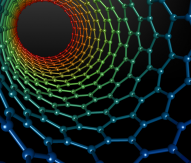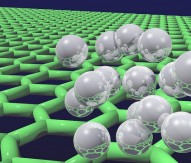
Quantum chaos in ultracold gas discovered
A team of researchers led by Francesca Ferlaino of the University of Innsbruck, Austria, and part-funded by the European Research Council, has discovered that even simple systems, such as neutral atoms, can possess chaotic behaviour, which can be revealed using the tools of quantum mechanics.
To observe quantum chaos, the physicists cooled erbium atoms to a few hundred nanokelvin and loaded them in an optical dipole trap composed of laser beams. They then influenced the scattering behaviour of the particles by using a magnetic field. After holding the atoms in the trap for 400 milliseconds, the researchers recorded the atom number remaining in the trap. The scientists were able to determine at which magnetic field two atoms are coupled to form a weakly-bound molecule. At this magnetic field, so-called ‘Fano-Feshbach resonances’ emerged.
“The particular properties of erbium cause a highly complex coupling behaviour between the particles, which can be described as chaotic,” explained Ferlaino. Erbium is relatively heavy and highly magnetic, which leads to anisotropic interaction between atoms.
After varying the magnetic field in each experimental cycle, and repeating the experiment 14,000 times, the physicists identified 200 resonances. The physicists used random matrix theory to confirm their results, thus asserting the universal character of this statistical theory.
Researcher Albert Frisch said: “We were fascinated by how many resonances of this type we found. This is unprecedented in the physics of ultracold quantum gases.”
“The electron shells of these atoms do not resemble spherical shells but are highly deformed,” he added. “Therefore, the type of interaction between two erbium atoms is significantly different from other quantum gases that have been investigated so far.”
In contrast to everyday speech, chaos does not mean disorder for the physicists but rather a well-ordered system that, due to its complexity, shows random behaviour. Ferlaino concluded: “We have created an experiment that provides a controlled environment to study chaotic processes. We cannot characterise the behaviour of single atoms in our experiment. However, by using statistical methods, we can describe the behaviour of all particles.”
The groundbreaking research opens up new avenues to observe the interaction between quantum particles.
The research has been published in the journal Nature.






